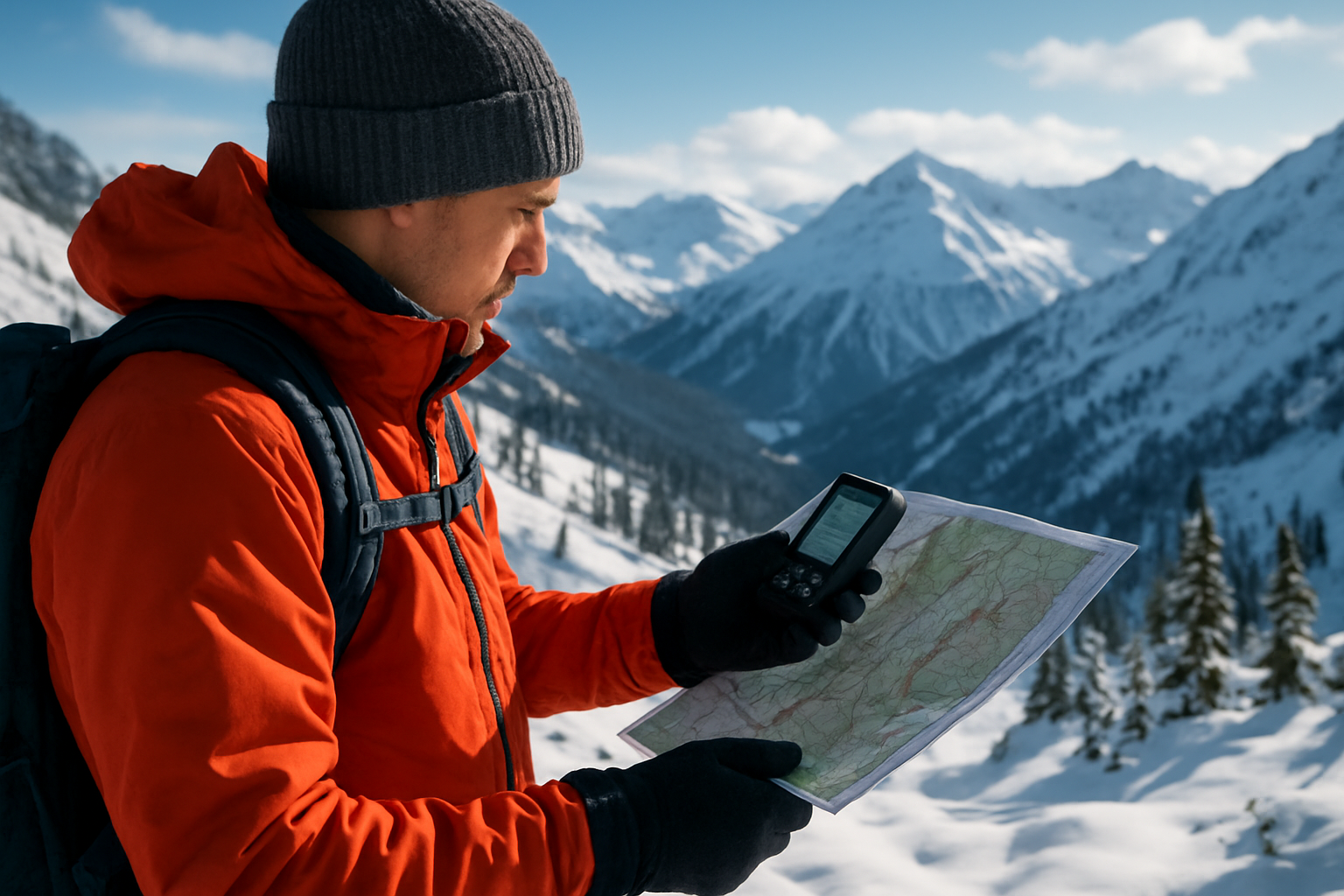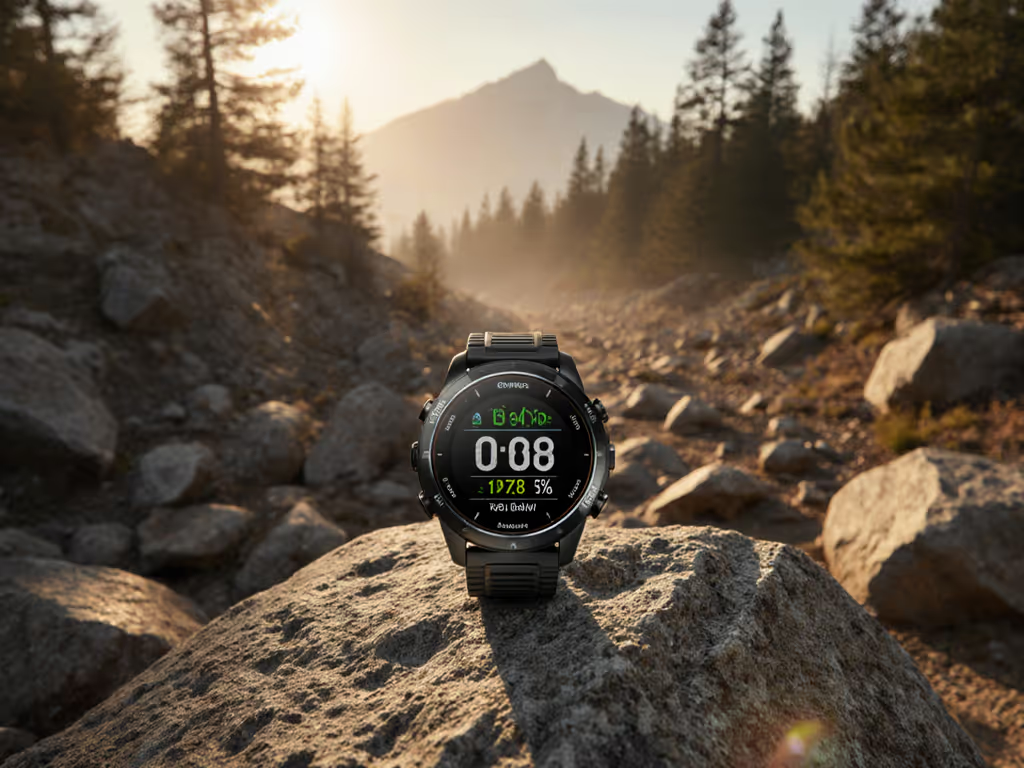
{"title":"The GPS Watch Lab's 10 Field Tests to Run on 2025-11-12: Accuracy, Battery & Offline Data Checks"}

{"title":"The GPS Watch Lab's 10 Field Tests to Run on 2025-11-12: Accuracy, Battery & Offline Data Checks"}
{"title":"The GPS Watch Lab's 10 Field Tests to Run on 2025-11-12: Accuracy, Battery & Offline Data Checks"}
This blog post for 2025-11-12 is your complete, field-proven plan for validating a watch before the snowpack deepens and the trailheads empty. When the mercury drops and connectivity fades, only disciplined testing separates dependable tools from false confidence. Drawing on thousands of hours in subzero wind, high alpine glare, and dense canopy, The GPS (Global Positioning System) Watch Lab distills ten practical, real-world checks that reveal accuracy under pressure, battery behavior in the cold, and offline data integrity when networks are gone. As you read, picture a simple diagram of two tracks on fresh snow: one pin-straight and true, the other drifting toward the trees; our goal is to make sure your watch draws the straight one.
Why This blog post for 2025-11-12 Matters for Real-World GPS (Global Positioning System) Reliability
Harsh environments expose weaknesses that marketing copy never mentions, which is why timing your evaluations on 2025-11-12 gives you early-winter conditions without peak-season crowds. Under forest canopy or between buildings, multi-band GNSS (Global Navigation Satellite System) can trim horizontal error by roughly 30 to 40 percent compared with single-band, yet only if firmware and antenna design work in concert. Meanwhile, lithium-ion cells can surrender 20 to 35 percent of usable capacity at minus 10 degrees Celsius as internal resistance rises and voltage sag triggers protective cutoffs. Together, these dynamics turn an untested device into a risky bet the moment the clouds roll in or a whiteout starts.
Beyond raw positioning, off-grid success depends on clean data pathways so you can plan routes, record evidence, and make decisions without a network. If a watch exports a GPX (Global Positioning System Exchange Format) file that fails to re-import cleanly, or if it compresses tracks so aggressively that waypoints disappear, your breadcrumb trail can fracture at the worst time. That is why The GPS (Global Positioning System) Watch Lab focuses on data portability alongside accuracy and battery metrics, ranking devices by how they behave in demanding, real-world workflows used by runners in alpine valleys, skiers on wind-scoured ridgelines, hikers in slot canyons, and field guides leading teams off-grid.
The GPS (Global Positioning System) Watch Lab's 10 Field Tests: Overview and Setup
To make results comparable and actionable, we execute a standardized protocol that mixes controlled trials with mission-style outings. Each test is short enough to run in a morning and robust enough to surface meaningful differences between devices. Before you start, fully charge the watch, update firmware, preload offline map tiles, and print a single-page checklist so you never lose momentum. Bring a second device for timing and reference, a small notebook, and spare layers to stabilize body temperature, because a consistent thermal profile helps isolate watch performance rather than human variability. Ready to move from guesswork to evidence you can trust when the wind bites your cheeks?
Watch This Helpful Video
To help you better understand blog post for 2025-11-12, we've included this informative video from Shivani kumari shorts unofficial. It provides valuable insights and visual demonstrations that complement the written content.
- Satellite Lock and Multi-Band Check: Measure cold start time to first fix and verify multi-band GNSS (Global Navigation Satellite System) selection outdoors.
- Static Accuracy Trial: Record a 15-minute stationary log at a survey mark to assess position wander and drift.
- Urban Canyon Walk: Track a 1 kilometer route alongside tall buildings to evaluate multipath resilience.
- Forest Canopy Loop: Jog a known 2 kilometer loop under trees to check track continuity and corner cutting.
- Elevation and Barometer Calibration: Calibrate at a known benchmark and ascend 200 meters to compare barometric vs. GPS (Global Positioning System) altitude.
- Repeatability Run: Repeat the same 3 kilometer route twice, overlay tracks, and quantify variance.
- Cold-Soak Battery Drain: Chill the watch to minus 10 degrees Celsius for 60 minutes, then log battery percent during a 90-minute activity.
- Ski Mode Validation: On groomed slopes or a hill, verify auto-lap per run, ascent tracking, and pause logic during lift rides.
- Offline Map Re-Routing: With airplane mode on, follow a preloaded route, intentionally deviate, and test onboard reroute speed and clarity.
- Data Portability Audit: Export GPX (Global Positioning System Exchange Format) and FIT (Flexible and Interoperable Data Transfer), re-import, and confirm waypoints and time stamps survive the round trip; create a CSV (comma-separated values) summary for your notes.
| Test | Environment | What to Measure | Target Threshold | Tools/Notes |
|---|---|---|---|---|
| Satellite Lock and Multi-Band Check | Open sky, cold start | Time to first fix, band selection | Under 45 seconds; multi-band engaged | Stopwatch; confirm settings |
| Static Accuracy Trial | Survey mark, minimal movement | Horizontal scatter radius | Under 3 meters median error | Tripod or flat surface |
| Urban Canyon Walk | Tall buildings | Track deviation from sidewalk | Under 6 meters average drift | Reference map |
| Forest Canopy Loop | Dense trees | Corner fidelity, dropouts | No dropouts; corners not cut | Overlay repeat runs |
| Elevation and Barometer Calibration | Known benchmark, ascent | Net elevation gain error | Within 5 percent of known | Weather-stable day |
| Repeatability Run | Same route twice | Track overlap variance | Under 3 meters median offset | Export overlays |
| Cold-Soak Battery Drain | Minus 10 degrees Celsius | % drop per hour while logging | Under 8 percent per hour | Insulated bag to stage |
| Ski Mode Validation | Resort or hill repeats | Auto-lap, ascent accuracy | Run count matches lifts; ascent within 5 percent | Manual lap backup |
| Offline Map Re-Routing | Airplane mode | Reroute speed, clarity | Under 10 seconds; clear prompts | Preload tiles |
| Data Portability Audit | Desktop and watch | Round-trip fidelity | 100 percent waypoints and time stamps preserved | GPX (Global Positioning System Exchange Format), FIT (Flexible and Interoperable Data Transfer), CSV (comma-separated values) |
Accuracy, Elevation, and Winter Navigation

Reliable navigation starts with the antenna and satellite strategy inside your watch, then quickly involves how the device fuses signals into track lines you can follow on snow or scree. Multi-band GNSS (Global Navigation Satellite System) can combine L1 and L5 frequencies to mitigate multipath, and that effect shows up as cleaner corners and fewer sidewalk-hugging errors in street canyons. If you're new to signal basics, see our GPS watch accuracy primer for how satellites, frequencies, and antennas shape track quality. In our winter evaluations, we also look for barometric smoothing that preserves real climbs while dampening gust-driven spikes, because a sudden pressure swing can create phantom elevation unless calibration logic is sound. Whenever possible, we run a second pass on the same route to see whether the watch draws nearly the same line twice, since repeatability is often the first casualty of weak firmware.
For skiers, the details matter even more because speed varies, lifts pause, and gloves complicate manual control. Good ski profiles automatically detect run starts and stops, tally ascent accurately on skin tracks, and avoid logging lift rides as downhill sprints, which keeps your time estimates honest for avalanche-safe route planning. For winter-specific quirks like tree cover and lift pauses, study our winter GPS ski accuracy guide. If you want a simple visual aid, imagine two overlays of a black diamond descent: the trustworthy watch inks a bold, unbroken stroke down the fall line while the pretender zigzags as if searching for snow. The GPS (Global Positioning System) Watch Lab rewards devices that stay steady across these contexts, because a clean track at noon on groomers means little if it falls apart near dusk in a glade.
Battery Endurance, Solar Gains, and Cold-Weather Effects
The second pillar of confidence is power, since an accurate device with a dying battery becomes an inert bracelet just when you need it most. In cold-soak testing, we track percentage drop per hour with full GNSS (Global Navigation Satellite System) logging, heart rate (HR) recording, and backlight settings matched to winter daylight, because each variable can nudge real endurance up or down. For step-by-step power settings that maximize runtime in the cold, follow our GPS watch battery optimization guide. Industry lab figures often quote room-temperature durations, but outside, wind chill and jacket placement shift thermals, and a 5-degree Celsius difference at the wrist can be the line between finishing with 20 percent or staring at a blank screen. For solar-enabled models, we measure net gain on clear, high-albedo days, noting that snow reflectivity can lift charge yields modestly during midday but rarely offsets cold-induced drain without disciplined power management.
Practical battery tactics are simple yet potent when measured, not assumed. Switch to multi-band only when accuracy requires it, because single-band can save several percentage points per hour on straightforward terrain without meaningful track loss. Use gesture-based backlight with a short timeout, verify heart rate (HR) intervals that balance data quality and runtime, and keep the watch tucked under a cuff during long lifts to dampen the cold-soak effect. The GPS (Global Positioning System) Watch Lab weights battery endurance heavily in rankings because finishing safely with logs intact beats any novelty feature when the thermometer refuses to climb.
Offline Data Portability and Ecosystem Audits

Even the best track is only as useful as your ability to plan, transfer, and verify it offline, which is why this pillar sits alongside accuracy and battery in our methodology. Before the day, we import a planned route as GPX (Global Positioning System Exchange Format), embed waypoints with notes for hazards and water, and confirm voice or vibration alerts work without a network. For choosing the right map layer and on-watch topo controls, see our field-tested topo mapping guide. After the outing, we export both GPX (Global Positioning System Exchange Format) and FIT (Flexible and Interoperable Data Transfer), open them in two independent tools, and cross-check distance, elevation, and time stamps for drift, then generate a CSV (comma-separated values) summary that can live in your training log or trip report. If anything fails the round trip or alters waypoint metadata, we flag it, because a brittle data path undermines group coordination and post-incident analysis for guides and teams.
| Format or Asset | Import | Record | Export | Round-Trip Fidelity | Notes |
|---|---|---|---|---|---|
| GPX (Global Positioning System Exchange Format) | Routes and waypoints | Track with annotations | Full activity | Should preserve all waypoints and names | Validate time zone handling |
| FIT (Flexible and Interoperable Data Transfer) | N/A for planning | Sensor-rich activity data | Full activity with laps | Should keep laps and sensor fields | Great for analysis tools |
| CSV (comma-separated values) | N/A for planning | Tabular metrics | Summary tables | Should match GPX totals within 1 percent | Ideal for coaches and reports |
| Waypoints and POI (point of interest) | Names, icons, notes | Proximity alerts | Included in GPX | Icons may map differently; names must persist | Check accented characters |
| Offline Map Tiles (MBTiles, Mapbox Tiles Specification) | Preloaded regions | On-device rendering | N/A | Not a data format; test clarity | Confirm zoom levels and contour labels |
Our ecosystem audits look beyond the watch into phones and desktops used by runners, skiers, hikers, and guides coordinating routes for teams. We evaluate app reliability in airplane mode, clarity of turn-by-turn prompts, and the ease of sharing files without cloud accounts, because real expeditions often ban live syncing. Budget-friendly devices can excel here if their software respects open formats and provides robust offline maps, which The GPS (Global Positioning System) Watch Lab highlights so cost-conscious buyers still get proven battery life and navigation they can trust. Ultimately, the best ecosystem is the one that preserves your plan, records what happened, and lets you review it with your partners without chasing missing bits through a web portal at midnight.
Putting Results to Work: Rankings, Case Studies, and Buying Paths
Lab numbers come alive when you watch how they change choices for real people, which is why we connect every metric to a scenario. A ski mountaineering team prepping a hut-to-hut line used repeatability and cold-drain results to select a model that lost only 5 percent per hour at minus 10 degrees Celsius, paired with conservative backlight settings and a clear ski mode; their day ended with clean splits and plenty of reserve. A field guide leading new rangers in canyon country picked a budget-friendly watch that scored high on offline GPX (Global Positioning System Exchange Format) fidelity and vibration prompts, because route clarity and post-hike reports matter more than phone-dependent bells. These are the kinds of practical wins The GPS (Global Positioning System) Watch Lab aims to enable, anchored in rankings that weight what keeps you safe first.
| Ranking Factor | Weight | Example Signals We Reward |
|---|---|---|
| Real-World Accuracy | 35 percent | Low drift under canopy and in urban canyons; clean cornering; repeatability across runs |
| Battery Endurance | 30 percent | Low cold-drain; flexible power modes; honest, verifiable runtime claims |
| Offline Reliability | 20 percent | Fast reroutes offline; robust GPX (Global Positioning System Exchange Format) and FIT (Flexible and Interoperable Data Transfer) round trips; clear on-watch maps |
| Winter Performance | 10 percent | Ski mode fidelity; glove-friendly controls; readable prompts in glare and snow |
| Ecosystem Fit | 5 percent | Offline-first apps; easy file sharing; useful CSV (comma-separated values) summaries |
From there, we translate findings into buying paths that match budgets and missions. If you are a runner dabbling in ski touring, pick a model with excellent single-band efficiency and solid ski detection, then enable multi-band only for tree-lined gullies. If you guide teams regularly, prioritize offline map clarity and data portability, because consistent GPX (Global Positioning System Exchange Format) round trips and dependable alerts simplify group management when radios crackle and schedules slip. And if solar charging tempts you, treat it as a helpful nudge rather than a solution in midwinter, verifying any gain with a midday control test on reflective snow so expectations match physics.
How to Execute the Tests on the Day
Structure turns good intentions into repeatable results, so anchor 2025-11-12 with a simple timeline and checklist you can stick to even if weather shifts. Start with a cold start satellite lock at dawn, run your static accuracy trial while sipping something warm, then move into the urban canyon and forest loop back-to-back to capture different multipath profiles under similar temperatures. After a short refuel, perform the elevation calibration and repeatability runs, then stash the watch for a one-hour cold soak before the ski validation and offline rerouting, finishing with a data audit indoors. Keeping notes as you go prevents hindsight bias, and snapping a photo of each watch screen at key moments provides quick visual anchors for later analysis without images here.
| Time | Activity | Goal |
|---|---|---|
| 07:30 | Cold start, lock test | Baseline fix time and band status |
| 08:00 | Static accuracy trial | Scatter radius in open air |
| 08:45 | Urban canyon walk | Multipath resilience |
| 09:30 | Forest loop | Corner fidelity under canopy |
| 10:30 | Elevation calibration + ascent | Barometric and GPS (Global Positioning System) altitude agreement |
| 11:30 | Repeatability run | Track overlap quality |
| 12:30 | Cold-soak start | Stabilize device at minus 10 degrees Celsius |
| 13:45 | Ski mode validation | Run detection and ascent tracking |
| 15:00 | Offline reroute test | On-device navigation without network |
| 16:00 | Data portability audit | Export and round-trip checks |
Before you head out the door, quickly review a checklist so you are not troubleshooting in the cold. Confirm firmware is current, multi-band GNSS (Global Navigation Satellite System) is enabled but easy to toggle, offline map tiles cover your routes, and alerts are set to vibration for quiet clarity under a beanie or helmet. Pack a power bank only as insurance, not as a crutch, because your test should reflect real endurance at the wrist, not on a cable. Finally, set a reminder to log subjective impressions like map readability in glare or glove-friendliness of buttons, because numbers alone cannot capture everything you depend on when the mountain is talking.
Here is the promise in one line: these ten tests transform a pile of specs into reliable navigation, durable power, and portable data you can trust when winter intensifies. In the next 12 months, multi-band refinement, better on-watch maps, and smarter power modes will raise the bar, but only field testing will tell which claims stand up to sleet and ice. What will your logs from this blog post for 2025-11-12 reveal about your watch, your routes, and your decision-making when the trail turns white and quiet?
Elevate Winter GPS (Global Positioning System) Readiness with The GPS (Global Positioning System) Watch Lab
Trust field-tested accuracy, offline data reliability, and sensor integration from The GPS (Global Positioning System) Watch Lab; plan Winter performance evaluations (skiing, cold conditions) for your blog post for 2025-11-12.



